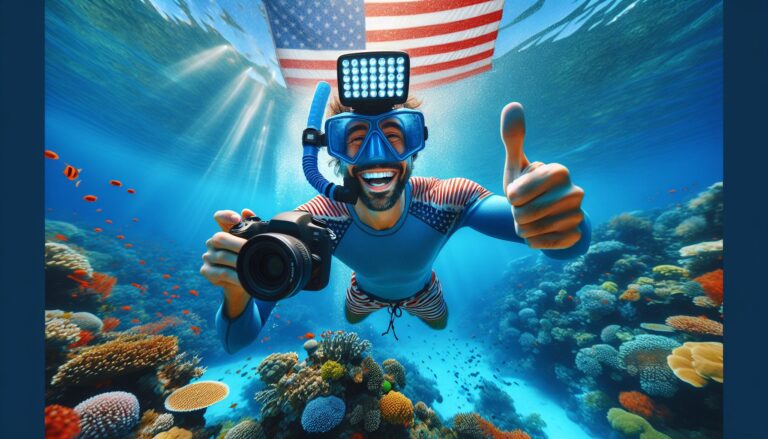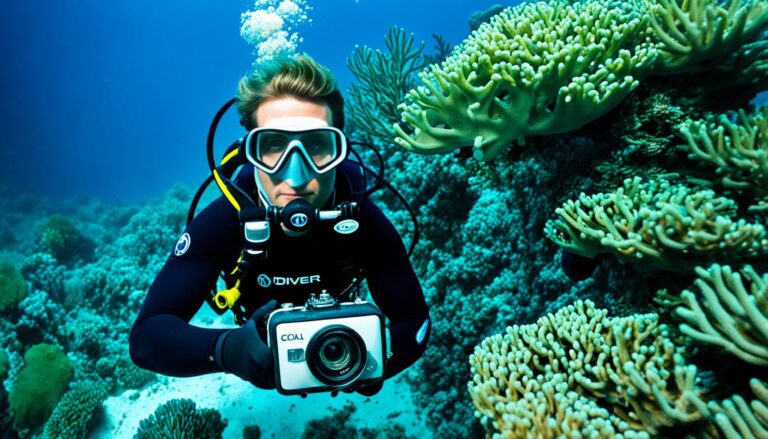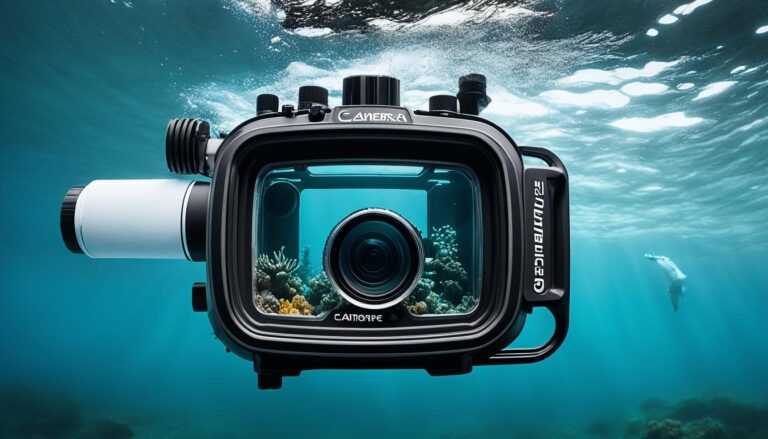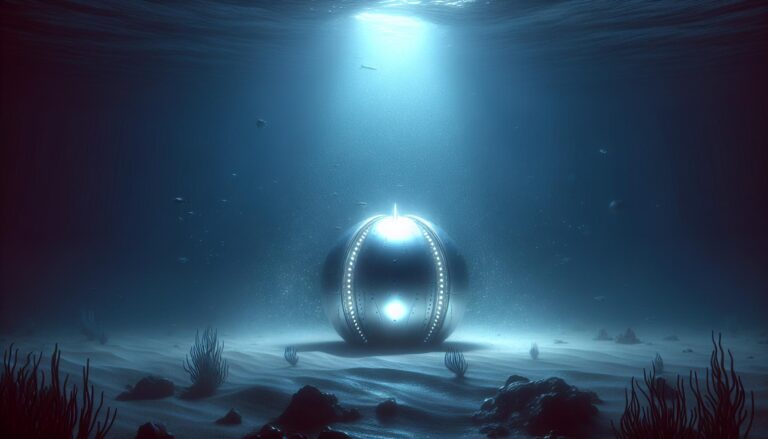Mastering Underwater Photography: A Comprehensive Guide to Using Digital Cameras Beneath the Waves
I’ve always been fascinated by the world beneath the waves. The vibrant colors, the diverse life forms, and the sense of tranquility—it’s a whole different universe down there. But how do you capture this underwater beauty in all its glory? Enter the underwater digital camera, a game-changer for aquatic photography.
Whether you’re an amateur snorkeler or a professional diver, an underwater digital camera is your ticket to breathtaking underwater shots. It’s not just about capturing memories, but about sharing the mesmerizing beauty of the aquatic world with others.
Overview of Underwater Digital Camera
A dive into the world of underwater photography reveals the indispensability of the underwater digital camera. Designed specifically for aquatic use, this tool captures bold, beautiful, and buoyant scenes beneath the water’s surface.
The Importance of Underwater Digital Camera
Equipped with unique properties optimal for submerged photography, an underwater digital camera marks a significant leap in aquatic imagery’s capabilities. Specialized in handling diverse underwater conditions, the gadget facilitates the clear capture of marine life, giving professionals and hobbyists alike a powerful tool for exploring and showcasing the hidden wonders beneath water surfaces. For instance, crystal-clear photographs of vibrant coral reefs, elusive aquatic creatures, and mysterious underwater caves become a possibility with this indispensable piece of equipment.
Evolution of Underwater Photography
Dating back several decades, the practice of underwater photography underwent a series of transformations. Once limited by technological restrictions, murky photographs and cumbersome equipment were common deterrents in the field. Yet, with the advent of digital technology, the narrative changed. The introduction of the underwater digital camera provided precision, ease of use, and enhanced visual quality. In 2005, large producers like Nikon and Canon released their line of waterproof cameras, providing a broader audience with the means to delve into this niche. Since then, advancements such as high-resolution imaging, integrated flash, and compact models, continue elevating the underwater photography experience. Thus, the underwater digital camera can be seen as a true testament to the remarkable evolution of this unique photographic field.
Diving Deep Into Underwater Digital Camera Specifications
Let’s submerge ourselves in the technical aspects of underwater digital cameras, understanding their specifications and why they matter.
Resolution and Underwater Photography
Quality, in underwater photography, is primarily dictated by resolution – the higher the resolution, the clearer the image appears. Typically, the resolution is marked in megapixels, for example, a 20-megapixel camera captures remarkable detail. This benefit proves meaningful when capturing the intricate nuances of marine life or coral reef landscapes. High-resolution cameras allow larger prints without loss of image quality, making them ideal for professionals aiming for gallery displays or covers of scuba diving magazines.
Importance of Waterproof and Pressure Resistance
Waterproof and pressure resistance aren’t just useful features; they’re essential for underwater digital cameras. They need to withstand both the water’s ingress and the crushing pressures found at depth if they’re to survive. For instance, a camera rated to a depth of 30 meters ensures protection on most recreational dives. Cameras also must resist the pressure changes encountered during ascents and descents, signifying an equally important consideration as waterproofing. This durability enables the camera to function correctly and capture the desired shots despite challenging underwater conditions.
Battery Life Considerations
Battery life can be a deciding factor in the usefulness of an underwater digital camera. It primarily determines how long a camera can function before needing a recharge. A camera with a battery life of up to 4 hours, for example, offers ample time for most dives. Superior battery life becomes particularly pivotal during extended dives or when shooting in cold water conditions, which can drain batteries faster. Consequently, longer battery life equates to more time capturing those unforgettable underwater moments before surfacing.
Top Underwater Digital Camera Brands
Moving forward from the technicalities, let’s cast a wider net on some renowned pioneers and rising stars in the realm of underwater digital photography.
Pioneers in Underwater Digital Cameras
Revisiting established territories, brands like Nikon, Canon, GoPro, and Olympus stand apart. Each has invested greatly in underwater digital camera technology. Nikon’s Coolpix AW130 and Canon’s PowerShot D30, for example, offer superb image quality, thanks to their high-resolution sensors. GoPro’s Hero series, equipped with supremely rugged designs and robust underwater functionalities, makes an exceptional choice for extreme sports enthusiasts and divers. Olympus, with its TG-6 camera, brings not only excellent high-resolution image quality but also impressive macro capabilities, enriching the underwater photographer’s toolkit.
Example Brands: Nikon, Canon, GoPro, Olympus
Emerging Brands Worth Considering
With the market expanding, new brands rise to the surface. Sealife, Paralenz, and Intova etch their names in the emerging line-up of underwater digital camera manufacturers. Sealife’s DC2000 illustrates its potential with bright, colorful underwater images, while Paralenz takes it up a notch with dive-friendly features in its Dive Camera+. Intova, with a focus on affordability in its X2 Camerasport, captures quite the impressive audience. These brands, though budding, propose sturdy, efficient, and innovative models that seasoned divers and marine photographers might find enticing.
A Comparison of Popular Underwater Digital Camera Models
In this section, I’ll dive into a comparison of popular underwater digital camera models, dissecting their picture quality underwater, battery life, and ease of usage.
Comparing Picture Quality Underwater
Underwater pictures rely heavily on the camera’s resolution and the ability to handle color correction in differing lighting conditions. Nikon’s Coolpix AW130, with a resolution of 16 megapixels, performs remarkably in delivering stellar image quality. Canon’s PowerShot D30, on the other hand, boasts a 12.1-megapixel high-sensitivity sensor for ultra-realistic images undersea. Similarly, GoPro’s HERO7 boasts a crisp 12 megapixel camera with its exceptional HyperSmooth video stabilization feature. Yet, the Olympus TG-5 stands out with a lower 12-megapixel sensor but compensates for this with an impressive f2.0 high-speed lens, providing brighter images even in low light underwater conditions.
| Model | Resolution (Megapixels) |
|---|---|
| Nikon Coolpix AW130 | 16 |
| Canon PowerShot D30 | 12.1 |
| GoPro HERO7 | 12 |
| Olympus TG-5 | 12 |
Battery Life Comparison
A camera’s battery longevity becomes vital during extended dives. The Nikon Coolpix AW130 offers an impressive 370 shots per charge, whereas the Canon PowerShot D30 offers up to 300 shots. In contrast, the GoPro HERO7 can shoot continuously for two hours, and the Olympus TG-5 offers approximately 340 shots. Notably, Sealife’s DC2000 provides up to three hours of continuous shooting, extending freedom underwater.
| Model | Battery Life |
|---|---|
| Nikon Coolpix AW130 | 370 shots |
| Canon PowerShot D30 | 300 shots |
| GoPro HERO7 | 2 hours |
| Olympus TG-5 | 340 shots |
| Sealife DC2000 | 3 hours |
Ease of Usage Comparison
Considerations in ease of use extend to camera controls, size, weight, and the presence of useful features like GPS. Canon’s PowerShot D30 sticks out due to user-friendly controls and in-built GPS. The GoPro HERO7’s compact size, on the other hand, makes it easy to handle during adventurous underwater explorations. The Olympus TG-5’s robust build yet lightweight nature ensures ease of use, while Nikon’s Coolpix AW130 commends attention with its ergonomic design and thoughtful button layout. Hence, each brand delivers their distinct touch to facilitate user-friendly underwater photography experiences.
Photography Tips for Underwater Digital Camera Users
Leveraging underwater digital cameras, like Nikon’s Coolpix AW130 or Canon’s PowerShot D30, requires knack and understanding. Read on for crucial tips to maximize underwater shooting potential.
Adjusting Settings for Underwater Photography
Optimal camera settings can elevate the quality of underwater shots. Most often, cameras should function in manual mode, enabling control over aperture, shutter speed, and ISO. For instance, on Nikon’s Coolpix AW130, I’d select narrower aperture settings, usually between f/8 and f/11, to gain sharpness throughout the frame. Coupling this with a fast shutter speed, typically about 1/125 sec to 1/200 sec, freezes movement and grants crisp photos.
ISO values, I’d recommend, determine how sensitive your camera becomes to the light, for Canon’s PowerShot D30, a low ISO, around 100-200, can minimize image noise. Some cameras like the Sealife DC2000 offer inherent underwater modes – users might find this helpful.
Dealing with Light Underwater
Underwater photography presents a unique challenge concerning light thanks to water’s propensity to absorb color. Control over white balance plays a critical role in retrieving colors lost to absorption. Utilize customizable white balance settings on cameras like the Olympus TG-5 to adjust to specific water conditions.
In locations with strong sunlight, I’d suggest utilizing the sun to advantage. Position the sun behind the camera for balanced, beautiful shots. If necessary, for murky or low-light settings, consider equipping an external flash or a video light like those compatible with GoPro HERO7.
Capturing Moving Subjects Underwater
Documenting moving subjects, such as fish or divers, in their underwater habitat demands swiftness and precision. Cameras with fast continuous shooting mode like the GoPro HERO7 can capture sequences of rapid shots, increasing the likelihood of producing a clear, compelling image of a fast-moving subject.
Choosing a strong autofocus system is essential too. Nikon’s Coolpix AW130, for example, includes powerful autofocus capabilities facilitating quick and accurate subject capture.
Perfect underwater photography isn’t just about a good camera; honing your skills and understanding the unique underwater environment is crucial.
The Future of Underwater Digital Cameras
From anticipated technological enhancements to market trends and predictions, diving into the future of underwater digital cameras opens a wellspring of intriguing possibilities.
Expected Technological Enhancements
Groundbreaking developments lie on the horizon that promise to redefine underwater photography. Chief among these are improvements in sensor technology, potentially yielding higher resolution images even in murky depths. About image stabilization, advancements can render it immune to unpredictable water movements, thus ensuring clearer shots. Additionally, developments in AI technology could revolutionize underwater camera capabilities. Think smart features like automatic adjustment of settings based on the underwater conditions.
Consider battery life. Enhancement in energy consumption and battery technology could lead to longer shooting times – an upgrade photographers desperately need. Further down the line, you can expect wireless charging capabilities to make the cut, marking the end of corded charging. Waterproofing betterments are also on the cards, significantly extending the maximum depth ratings.
| Technological Enhancements | Impact on Underwater Photography |
|---|---|
| Improvement in sensor technology | Higher-resolution images |
| Advancements in image stabilization | Clearer shots |
| Development in AI | Smart features |
| Enhancements in battery technology | Longer shooting times |
| Improvements in waterproofing | Extended depth ratings |
Market Trends and Predictions
The market for underwater digital cameras, according to segments insights, shows signs of impressive growth. It’s driven predominantly by a surge in underwater sports and recreational activities that require robust, waterproof cameras. Eco-tourism, a steadily growing industry, also factors into this prediction, as explorers desire to capture the remarkable biodiversity beneath the waves.
Moreover, an upward trend in professional underwater photography further fuels the market’s expansion. As technology drives down costs and upscales performance, more photographers can realistically pursue this niche. Manufacturers, grabbing this opportunity, are likely to release more advanced models, intensifying competition and pushing the evolution of underwater digital cameras.
| Market Trends | Predicted Impact |
|---|---|
| Surge in underwater activities | Increased demand for robust, waterproof cameras |
| Growth of eco-tourism | Rise in exploration and documentation of underwater biodiversity |
| Upsurge in professional underwater photography | Higher niche pursuit and product competition |
Reviewing the Best Accessories for Underwater Digital Cameras
As the underwater photography world evolves, so does the need for specialty equipment. Dive into this exploration of essential and creative accessories, tailored to improve the underwater digital camera usage experience.
Essential Accessories for Underwater Photographers
When it comes to underwater photography, equipment plays a pivotal role. A high-quality waterproof case, for instance, ensures that your Nikon Coolpix AW130 or Canon’s PowerShot D30 remains safe and functional beneath the waves. Ideally, the case has a pressure rating of at least 40 meters, the standard depth for recreational scuba diving.
Moreover, proper lighting, such as LED dive lights or strobes, can provide the best color and clarity for your shots. For example, SeaLife’s SL670 Sea Dragon 2100 Dual Beam underwater light with its 2100 lumen floodlight enhances the vividness of your photos.
Lastly, to combat the adversary of every photographer, unstable shots, a sturdy underwater tripod or mono-pod is critical. GorillaPods, for instance, with their flexible, strong joints adapt to the uneven ocean floor, providing stability and precision.
Creative Accessories to Enhance Your Photos
Accessories don’t merely stop at necessity; they also extend into the realm of creativity. Fisheye or wide-angle lenses, for instance, can provide a unique perspective of the underwater world, capturing epic reefscapes or large marine animals in their entirety. Consider the Olympus M.Zuiko Digital ED 8mm Lens, renowned for inducing captivating circular fisheye effects in your images.
Additionally, for those interested in capturing minute details, macro lenses like the Canon EF 100mm f/2.8L IS USM macro lens afford close-up precision, ideal for shooting miniature reef organisms.
Finally, color correction filters like Magic Filters can significantly enrich your shots’ color palette, particularly helpful when shooting at depths where colors tend to fade.
Every accessory mentioned allows a deeper dive into the art of submerged photography, enhancing the usage of underwater digital cameras, broadening your photographic repertoire. The right combination of these can help you not just take good underwater photos, but create masterpieces.
Conclusion
So there you have it. We’ve journeyed through the compelling world of underwater digital cameras, from Nikon’s Coolpix AW130 to Canon’s PowerShot D30, and explored their game-changing features. We’ve dissected the key technical aspects – resolution, waterproofing, battery life – that make these cameras the ideal pick for underwater photography.
We’ve also delved into the realm of accessories, both essential and creative, that can transform your underwater shots from good to great. Whether it’s waterproof cases, lighting equipment, stability tools, or creative tools like fisheye lenses and color correction filters, the right accessories can make all the difference.
But remember, it’s not just about the gear. It’s about honing your skills, understanding the underwater environment, and using your tools effectively. With the right approach, you can create truly stunning underwater masterpieces. Dive in and let your creativity flow!






